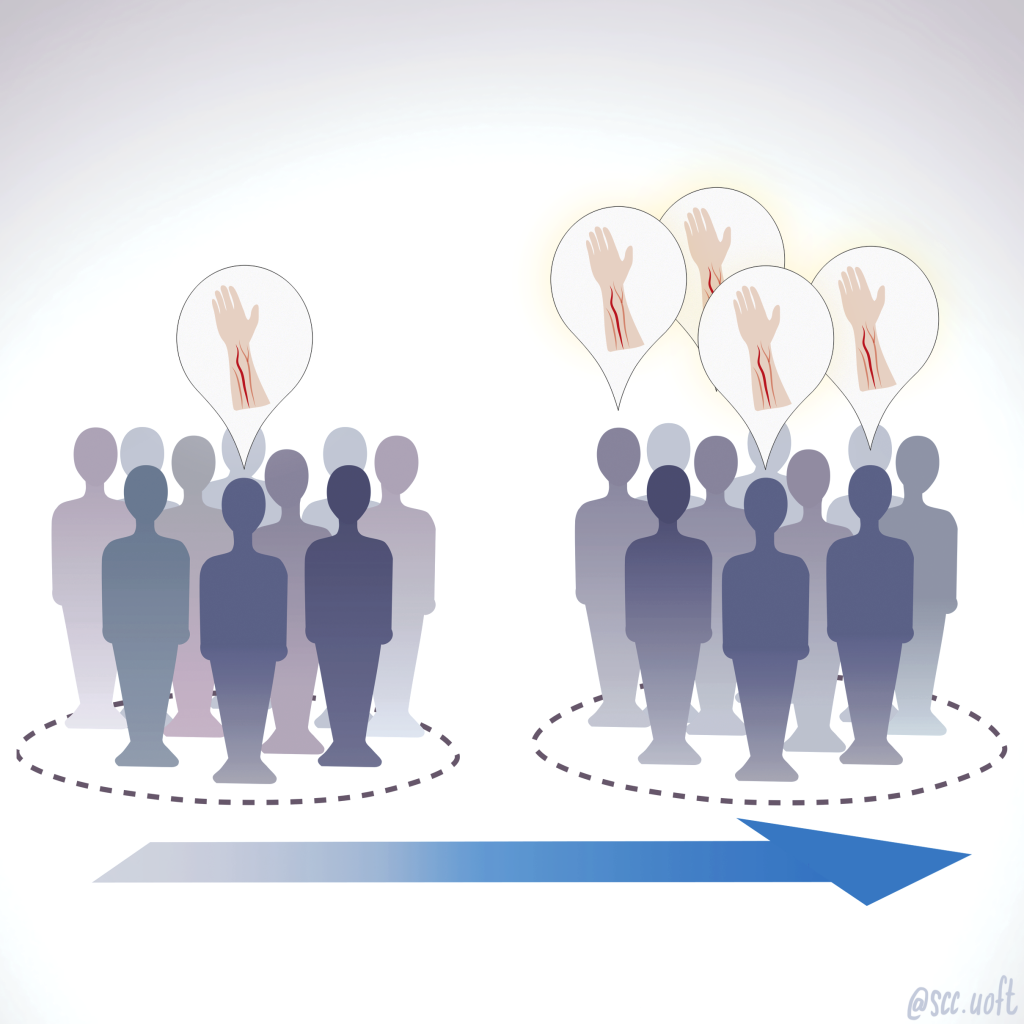
Written by Quinn Lui
Illustrated by Sally Kyunga Kim
In the womb, the median artery is the first main blood supplier for the forearms and hands. Two other vessels soon take over this responsibility, and the median artery vanishes—most of the time. It stuck around for the entire lives of 10% of the humans born in the 1880s, and had become three times as common a century later. A group of Australia-based researchers claims that if this rate of increase holds steady, median arteries would be present in the entire human population by 2100. But how likely is that?
As it turns out, the median artery’s continual increase is a possible example of human microevolution: changes in the traits passed down from one generation to the next, occurring over a relatively short period of time. According to the theory of natural selection, these changes tend to reflect traits that better help us survive and reproduce. For the median artery to keep becoming more common at the exact same rate, all of the natural selection pressures that currently affect it would have to stay the same. But in our unpredictable world, this would be very unusual!
It’s not yet clear which specific pressures cause the rising prevalence of the median artery. We do know that the artery increases the overall blood supply to your arms and hands, which can boost both your strength and dexterity. However, the opposite can also occur, as having a median artery puts people at a greater risk for carpal tunnel syndrome. This condition, which happens when one of the main nerves in your forearm gets compressed, can lead to pain, numbness, and weakness in your hand.
A similar puzzle arose last year, when a team of British researchers noticed that more people were being born with an extra knee bone known as the fabella. According to the model they crafted, fabellae (the plural of fabella) only showed up in 11.2% of the population in 1918, but that slowly grew to 39% by 2018. Unlike the median artery, though, we don’t even know what fabellae do yet!
One possibility matches the worldwide trend for improving nutrition against the timeline of the rising fabella rate. As the average human’s height and weight increase, our knees experience more pressure. An extra bone there could potentially provide much-needed additional support and friction relief. That being said, some people actually experience discomfort due to their fabellae, which are also associated with pain and arthritis in the knee area. Clearly, the mystery remains unsolved.
Sometimes, microevolution can take the form of traits starting to vanish instead. The team researching the median artery also found that more and more babies are being born without wisdom teeth. This may be occurring because our food now goes through a lot more processing before it reaches our mouths, making it easier to chew. At the same time, our faces have been growing shorter, so there’s both less of a need and less space for our wisdom teeth. Still, this is only another hypothesis. Far more research is needed about our reappearing and disappearing body parts before we can be confident about why we’re evolving this way—or if we are at all.
Sources:
- https://phys.org/news/2020-10-forearm-artery-reveals-humans-evolving.html
- https://www.livescience.com/extra-blood-vessel-found-humans-evolving.html
- https://radiopaedia.org/articles/carpal-tunnel-syndrome-1?lang=us
- https://www.sciencealert.com/a-bone-that-evolution-abandoned-is-making-a-strange-return-in-modern-humans
- https://www.independent.co.uk/news/science/wisdom-teeth-evolution-humans-flinders-university-processed-food-b907634.html